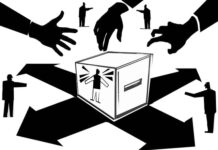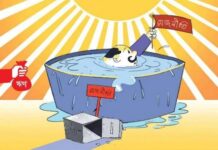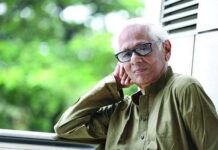This sprawling city of 14 million suffers the developing world’s best-known ills: crushing poverty, tangled traffic and overburdened services that leave piles of pungent waste scattered across the city.
And the government’s latest plan to bring Dhaka under control by splitting the city into two parts, each with its own bosses, is only making matters worse, many residents say.
The project started in late 2011, when Bangladesh’s parliament, controlled by the ruling Awami League political party, voted to divide the 400-year-old city in two. Backers thought Dhaka was simply too big to manage. Two smaller cities, the thinking went, would be easier to govern than one.
But confusion over demarcation lines between North and South Dhaka has left some city officials unsure who is supposed to look after key stretches of road. Debates have broken out over who should pay to fix street-cleaning vehicles and who represents Dhaka at international conferences. Residents say it takes longer to get licenses from city offices, when they even know to which one to go.
“Everything is messed up,” said Sarwar Jahan, an urban planner at Bangladesh University of Engineering and Technology. “They created more problems than they solved.”
Foreign investors routinely cite poor governance of Dhaka and other cities as among the main reasons why they don’t park more money in Bangladesh. “Services are even worse than before” the split, said Syed Ershad Ahmed, an executive in the Bangladesh office of Expeditors International, a Seattle-based logistics firm and president of the Foreign Investors’ Chamber of Commerce & Industry.
Adding to the confusion, some public services, such as policing, utilities and public transport are run citywide, superimposed over both of the so-called city corporations.
In August, the Economist Intelligence Unit declared Dhaka the second-least-livable city in a global survey, just ahead of war-torn Damascus, Syria, and below Lagos, Nigeria.
Many residents say they suspect Awami League leaders wanted to oust Dhaka’s then-mayor, an opposition leader, and viewed the split as a way to do that. The Awami League denies the allegation.
And the continuing debate over the split is likely to become an issue in national elections slated for January. The opposition Bangladesh Nationalist Party has pledged to reunite the city if voted into power.
Abul Kashem, a senior official in the Ministry of Local Government and Cooperatives, which oversees the city corporations administering urban areas, acknowledges the split hasn’t yielded intended benefits. “We have not figured out the logistics and the mechanism for better service delivery,” he said, citing manpower shortages and lack of coordination. The government is working on it, he said.
But it doesn’t help that neither of the two Dhakas has selected a mayor in the 18 months after the split, even though elections were required within six months of partition. Disputes over how to draw up voter lists have led to delays. “Bureaucrats cannot do the job of an elected mayor,” Mr. Kashem said. “We’re basically proceeding with a stopgap measure that has gone on for too long.”
The result is that both Dhakas are now run by government-appointed administrators whose terms run just six months, after which they are replaced.
Dhaka South’s chief administrator, Mohammad Nazmul Islam, said talk of a deteriorating city is nonsense. His half of Dhaka has added more trash-collection vehicles and improved mosquito control, he said, adding that it also is adding traffic overpasses. And splitting Dhaka into two has made it easier for city officials to connect with constituents, since each part now has fewer to look after, he said. Dividing Dhaka was a very good idea, he said. “It should have been more sections. Four cities would have been better.”
Dhaka North’s chief administrator declined to comment.
Rank-and-file city staff often criticize Dhaka’s bifurcation. Tariq Bin Yousuf, a superintendent engineer in Dhaka North, said his municipality didn’t get a repair facility for city vehicles after partition and had to plead with Dhaka South to look after its fleet. Dhaka North eventually built its own maintenance facility, but still can’t handle some vehicles, he said. “Everyone knows there’s a problem.”
Many Dhaka residents don’t know in which city they live. In Sultanganj, a working-class section in southwest Dhaka, several residents said they were definitely in Dhaka South, citing information from ward commissioners. Others said they were in Dhaka North. A nearby sign indicated it was the North.
Dhaka’s plan to split emerged around the time the main administrative body in Delhi, in neighboring India, was working on dividing into three parts. Delhi’s split also led to complaints of declining services and confused responsibilities, with leaders of the three city administrations promising to address grievances as they work the kinks out of the new system.
In 1950, officials mapped out Dhaka as a city of 1.5 million people, Mr. Jahan, the urban planner, said. Now, Dhaka’s population is expected to mushroom to 22 million or more by 2020, according to the World Bank.
Source: Wall Street Journal










